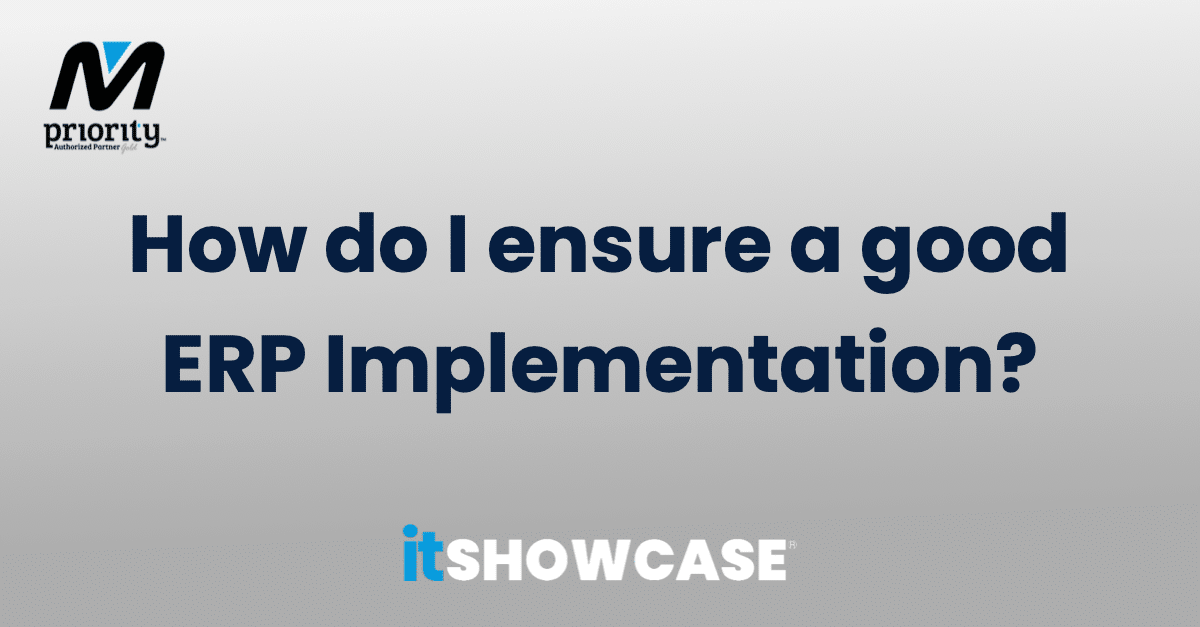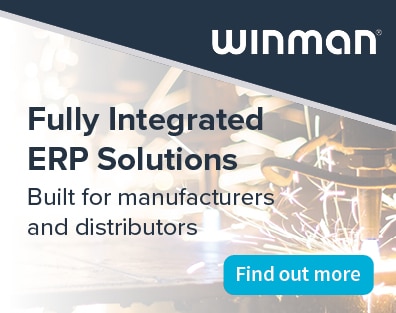Written by Medatech – regular exhibitor at itSHOWCASE events
As you embark on what will probably prove to be the largest IT project your company attempts, there is a natural fear that
it will not go as well as you want. There are, after all, enough scare stories around to suggest that a successful project can be hard to pull off. So what can we do to ensure success and avoid the many potential pitfalls along the way?
Here we will set out a number of points that have been gathered from our many years of experience of implementing
systems in companies in a wealth of varied industries and of many sizes. We are not delving into the art of project
management here, that is a large enough subject all on its own, but there are many other aspects that need careful
attention to provide you with the best chances of running a great implementation and achieving all the goals you set
yourself.
- Management commitment
A project of this importance should be high on senior management’s priority list. It will cost a lot of
money and it has the potential to change the way the company operates and how profitable it will be in
future. With this list of factors it is vital that the senior management team OWN the project. They must
want to know progress and get involved to make sure their issues are addressed. Important decisions
need to be made about business processes that only the senior team will be able to make. This is a key
risk to the timescale of the project. And don’t forget a delayed go-live means delayed payback. - Staff engagement
It is the staff who will be using this new solution after implementation, so it is vital that they are fully on-
board. This means involving them throughout both the selection and implementation. This can be
achieved with active and effective communication to ensure everyone realises the reasons for the
change and the benefits the business is expecting to achieve. It is much easier to get behind an initiative
if you know how good life will be once the dust has settled. If you don’t set out the company’s
expectations of the project to staff, they will invent their own and be very cynical when their
expectations are not met later down the road. - Know what you want (and ignore what is not relevant)
To achieve your goals you need to decide what they are upfront. This will include elimination of current
inefficiencies, process automation and simplification, improved user interfaces and much, much more. It
is also vital, however, to understand what is not relevant. The nature of ERP systems is that they have
much more functionality than any one business can use. Make sure the sexy new features that you will
never use are ignored. The software vendor will get very excited about the latest new feature, but if you
cannot or do not want to use it, there is no point in considering it. - Know what your current issues are
The reason you are contemplating the move to a new system is because you have issues which you
cannot address in your current environment, or perhaps you will not be able to make use of your
current capability due to system obsolescence. Whilst it is easy to complain that today you are suffering,
it is imperative you identify and itemise exactly what the problems are. Only then can you judge if the
new proposed solution will fix the issues. This will help you judge any contenders for the new system
and also help you understand how your business operates today.
- Know what you need to connect with
Whilst you want your ERP solution to manage as many of your business processes as possible, there will always
be some aspects that need to be handled by 3 rd party specialist systems, e.g. web-sites, customer and supplier
system integrations, Cad system interfaces. Ensure you have a clear vision of where the boundaries to your ERP
system will be and make sure the solution you seek has as simple as possible links, preferably direct integrations. - Understand this is a journey
The business world is constantly changing and individual companies are also flexing the way they do business all
the time. This means that what you are looking for today will not be ideal in future, maybe in as short a time as 6
months. Therefore, by the time you go-live with a new system you may need to re-assess how well it satisfies
your requirements. Constant change means constant flexibility. Thus the go-live of a system is not the end goal.
The Continuous Improvement movement came about because it was clearly apparent that businesses must
constantly improve to stay ahead of the race. This applies just as much to ERP systems and their
implementations. - Be comfortable with your vendor/implementer/support organisation
The software vendor and/or implementer and/or support organisation are an immensely important part of this
picture. You will have a long-term relationship with this organisation and they will be responsible for ensuring
that your business runs as smoothly as possible into the future. This relationship is of vital importance. If you feel
you have to hold your nose whilst you are dealing with them through the selection process, guess what, it’s not
going to get any better once you are in the midst of implementation or demanding ongoing support from them. - Make sure you have sufficient internal resources
The point made earlier about management commitment also applies here as well. Ownership of this project
means finding the resources to carry out the implementation whilst still carrying on with the normal business. If
you have spare resource waiting to take on a project such as this then well done, but I suspect you don’t.
Businesses today operate in a very lean environment. Consequently, there are important decisions to be made
about who will take on extra responsibilities during this project and if you need to recruit short term resource to
free up key players that you want in the project team.
As I pointed out before, this does not address the project management methodology and tools you wish to
employ for the implementation project, that is a completely different blog which we will address later.
Remember this project is one of the most important you will undertake, so don’t skimp on the resources or the
management time you provide to it.
Written by Medatech – regular exhibitor at itSHOWCASE events






